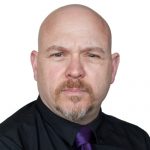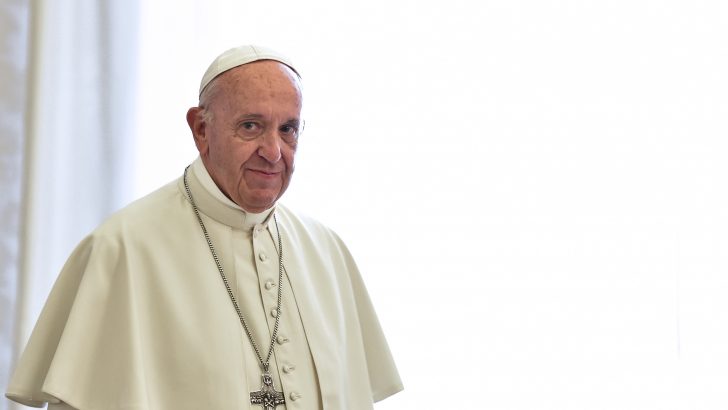The Latin American Pope faces a testing visit, writes Paul Keenan
There could hardly have been a more diabolical challenge to the upcoming visit of Pope Francis to Mexico than the January 29 murder of baby Marcos Miguel Pano Colón.
In a single violent incident among the many thousands perpetrated by the country’s drugs cartels over the years, the deliberate shooting of seven-month-old Marcos in the arms of his father by the man’s rivals (Marcos’ parents died with him) illustrated in a moment the depraved depths to which the Pontiff’s messages must reach if he is to be the force for change he has previously been for isolated Cuba and war-torn Colombia.
Mindful, perhaps, of the breadth of the challenge he faces as he touches Mexican soil on February 12 for the first time as Pontiff (he has visited previously, in 1970 and 1998), Pope Francis acknowledged his limitations as a man in a recorded message to the nation a week ahead of his arrival.
“I’m going to Mexico not as a wise man bearing things, messages, ideas or solutions to problems,” he said, before adding: “I would like to be an instrument of peace in Mexico, but only with you all. It’s obvious that I can’t do it alone. I would be crazy if I said that. But together with you all, [I visit] as an instrument of peace.”
If Pope Francis’ message was in any way informed by the death of baby Marcos, it must equally have sought to reach those behind the furious backlash against the infant’s killers, the thousands who took to social media to echo the oft-repeated message of Mexico’s bishops that “enough is enough” and who staged candle-lit vigils in the child’s memory.
Crime
As the greatest scourge of the Mexican people, and the greatest single threat to the nation’s democracy, the drugs cartels of Mexico must surely be ‘worthy’ of their own heartfelt appeal from the Pope during his six-day visit.
Sadly, while certain locations can be predicted to be the site of specific key messages from the Pontiff, when it comes to narco trafficking, the Pope is ‘spoiled for choice’ in where he speaks on the issue of crime and drugs.
There is barely a corner of the nation that has been untouched, virtually no community where innocents have not suffered in lethal crossfires.
However, while commentators look to the border city of Ciudad Juarez as the site where the clearest message on migration will be delivered (and heard across the barricades in El Paso, Texas, where thousands of pilgrims are gathering), the city may well also become the focus for Pope Francis’ anti-crime call.
Readers of The Irish Catholic may recall this newspaper’s coverage in December of Ciudad Juarez and its slow yet steady rise from the grip of the Sinaloa cartel (dealt another hammer blow in January with mass arrests of leading figures). If there is one city in all of Mexico which represents a light at the end of the tunnel for the country’s pain, it is here, offering the Pontiff a golden opportunity to cite the benefits of rejecting crime in favour of stability and peace.
Notably, it is in Ciudad Juarez where the Pope will undertake a ‘signature visit’, to a prison, where he will spend a few hours with the inmates of Cereso 3 in the city. Reports over the last week have detailed feverish work by prisoners to paint their surroundings, carve crosses, and even to improve their singing for their VIP guest.
As a side note, if Pope Francis seeks inspiration as the pilgrim he seeks to be, it may well come from Cereso 3; re-seized from a corrupt governor by Ciudad’s mayor and police, the prison was cleared of its 92% drug rate to become a model of best practice to the extent that the United Nations has examined its winning ways.
Migration
It is a much reported fact today that the latest statistics for migration between Mexico and the US have shown a reverse flow for the first time, with many families, including those with American-born children, departing the States in recent years.
Despite claims north of the border that increased enforcement of border controls and clampdowns on illegal migrants are reaping dividends (they are to an extent), research has found that the majority of those Mexicans now heading south do so by their own choice, many disillusioned with the slow pace of recovery in the US, affecting areas such as construction and other traditional sources of work for migrants.
This is only part of Mexico’s migration story, however, and one reflected in the Pope’s choice of the state of Chiapas as a leg of his visit.
Located at the very tail-end of Mexico, and forming the isthmus to the next countries of Latin America, Chiapas is the gateway to the north for those Latin Americans fleeing the ills of their own countries in search of the American dream. Here is where they fall foul of human traffickers and experience the real vulnerability of undocumented migration. Thus, it is here, on February 15, where the Pontiff will reiterate his message on behalf of all migrants and refugees.
Meanwhile, to be noted in conjunction with the Chiapas visit will be the announcing of the Pope’s decree that indigenous languages may be used in the celebration of Mass, an act of solidarity with those native communities so often neglected in Mexico.
Poverty
At the heart of all, of course, are the grinding levels of poverty experienced by generations of Mexicans, forcing the historic rates of migration and the temptation of riches to be had in joining a drugs cartel.
Here the Pope is on the strongest ground, and set to incur the wrath of capitalist commentators to the north when he rails against the crushing inequality wrought by globalisation. (It will be interesting to see if any of the US presidential candidates feel compelled to address the Pope’s words in the coming days.)
It is a given that the Pontiff will repeat his calls for a fairer distribution of wealth, not least for those many Mexicans who, working for non-domiciled US factories, earn $20 per week at the hands of employers eager to cast off the shackles of fair employment practices required north of the border but absent just south of it.
Pope Francis will meet 3,000 business leaders on February 17, and will surely repeat his message from an interview in March 2015: “I would say that not paying a just wage, not paying someone’s pension, not paying their bonuses, is a sin.”
And, at last, if there is one part of the Pope’s journey that may not be subjected to public disclosure, it will be his private time, specifically requested as “a favour” from the Mexican people, with the icon of Our Lady of Guadalupe, the nation’s patron, in Mexico City. Here, a most prominent pilgrim will perhaps seek the messages and solutions he seeks.
And perhaps he will say a silent prayer for Marcos Miguel Pano Colón and all the children of Mexico.
The Pope’s itinerary in Mexico
Friday, February 12
7.30pm – Arrival in Mexico City from Rome
Saturday, February 13
9.30am – Visit to the National Palace to meet President Enrique Peña Nieto
10.15am – Meeting with Civil Authorities and Diplomatic Corps
11.30am – Meeting with the bishops of Mexico in the Cathedral
5pm – Mass in the Basilica of Guadalupe
Sunday, February 14
9.20am – Travels by helicopter to Ecatepec
10.30am – Holy Mass in the area of the Study Centre of Ecatepec
12.50pm – Transfer by helicopter to Mexico City
4.30pm – Visit to the Pediatric Hospital Federico Gómez
6pm – Meeting with the World of Culture in the National Auditorium
Monday, February 15
7.30am – Departure by plane for Tuxtla Gutiérrez
9.15am – Transfer by helicopter to San Cristóbal de Las Casas
10.15am – Mass with the indigenous community of Chiapas at the Municipal Sports Centre
1pm – Lunch with indigenous representatives and the papal entourage
3pm – Visit to the Cathedral of San Cristòbal de las Casas
3.35pm – Transfer by helicopter to Tuxtla Gutiérrez
4.15pm – Meeting with Families in Víctor Manuel Reyna Stadium at Tuxtla Gutiérrez
6.10pm – Departure by plane for Mexico City
Tuesday, February 16
7.50am – Departure by plane for Morelia
10am – Mass with priests, religious, consecrated persons and seminarians
3.15pm – Visit to the cathedral
4.30pm – Meeting with Young People at José María Morelos y Pavón Stadium
6.55pm – Departure by plane for Mexico City
Wednesday, February 17
8.35am – Departure by plane for Ciudad Juárez
10.30am – Visit to a prison (Ceresno 3)
12noon – Meeting with the World of Work at the Colegio de Bachilleres dello Stato of Chihuahua
4pm – Mass at the fairgrounds of Ciudad Juárez
7pm – Departure ceremony at Ciudad Juárez International Airport


 Paul Keenan
Paul Keenan